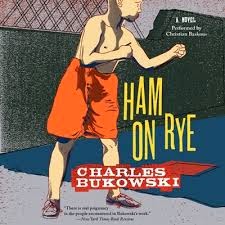
I went to listen to Novella Carpenter author of Farm City:
The Education of an Urban Farmer. She
made the crowd laugh and she made her talk very interesting. She uses profanity and humor in her speeches
which had many of us looking around because it was unexpected. There was a mixed crowd ranging from college
age to late 60’s maybe. Most of the people there was K-College student since it
was hosted in their Fine arts building.
 One thing I found most interesting was she used the term “squatting”. At first I didn’t know what was meant by the
term until she further explained that it was farming on a piece of land that
nobody really owned. She mentioned her
car was egged when she first rode through the neighborhood. This is a part of town that has been
neglected with lots of burned and abandoned homes. The land she squatted on for 8 years was a
burned down apartment complex. In this
part of town is called “Ghost town” traditionally called food desert because
there are no access to grocery stores or healthy foods. She mentioned it was
like the perfect storm because the city tried to help and eminent domain
destroyed housing, highways were built and it destroyed the sense of community. People would ask her for .50 cents and she
would offer them an apple not thinking they would accept her offer. This is when she got a real sense of hunger
in the community.
One thing I found most interesting was she used the term “squatting”. At first I didn’t know what was meant by the
term until she further explained that it was farming on a piece of land that
nobody really owned. She mentioned her
car was egged when she first rode through the neighborhood. This is a part of town that has been
neglected with lots of burned and abandoned homes. The land she squatted on for 8 years was a
burned down apartment complex. In this
part of town is called “Ghost town” traditionally called food desert because
there are no access to grocery stores or healthy foods. She mentioned it was
like the perfect storm because the city tried to help and eminent domain
destroyed housing, highways were built and it destroyed the sense of community. People would ask her for .50 cents and she
would offer them an apple not thinking they would accept her offer. This is when she got a real sense of hunger
in the community.
Another topic I found interesting is the fact that homeowners
can get a tax credit for having a garden instead of a lawn. You can place the garden on top of concrete
and not have to worry about contaminants such as lead that's found in the
ground in California. I would quickly
put a garden in my yard, not so much for the credit but because it’s empowering
when you are able to feed yourself and know that you grew it.















